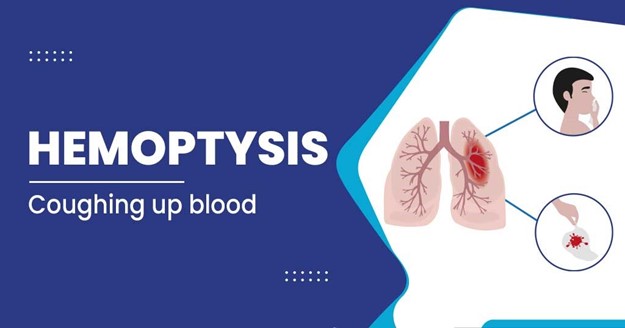A nurse is caring for a client who develops a sudden onset of dyspnea. Which of the following findings should the nurse expect if the client has a pulmonary embolus?
Expiratory rhonchi.
Petechiae over the lower extremities.
Hemoptysis.
Flattened neck veins.
The Correct Answer is C
Choice A rationale:
Expiratory rhonchi are typically associated with conditions such as chronic bronchitis or asthma but are not specific to pulmonary embolism.
Choice B rationale:
Petechiae over the lower extremities is not a characteristic finding in pulmonary embolism. Petechiae are tiny red or purple spots that appear due to bleeding under the skin and may be associated with other conditions like thrombocytopenia.
Choice C rationale:

The correct choice. Hemoptysis, which refers to coughing up blood, is a concerning finding in pulmonary embolism. It occurs due to the obstruction of blood flow in the pulmonary vasculature, leading to blood leaking into the lungs.
Choice D rationale:
Flattened neck veins are more likely to be observed in conditions associated with decreased venous return to the heart, such as hypovolemia or cardiac tamponade, and are not directly related to pulmonary embolism.
Nursing Test Bank
Naxlex Comprehensive Predictor Exams
Related Questions
Correct Answer is A
Explanation
Choice A rationale:
The nurse should maintain the affected leg elevated on several pillows to reduce swelling and promote venous return. Elevating the leg helps minimize edema, which can be beneficial for the healing process and overall comfort of the client.
Choice B rationale:
Instructing the client to wiggle the toes once every 4 hours is not necessary and may cause discomfort to the fractured tibia. Toe wiggling does not provide any significant benefit in this context and could potentially disrupt the healing process.
Choice C rationale:
Using a hair dryer to promote drying of the cast is not recommended. Applying heat to the fiberglass cast may alter its integrity and lead to uneven drying, potentially weakening the cast's support.
Choice D rationale:
Applying heat to the client's cast for pain relief is not advisable. Heat may also weaken the cast material and is unlikely to provide effective pain relief for a fractured tibia. Instead, the nurse should follow the prescribed pain management plan and use appropriate pain medications as ordered by the healthcare provider.
Correct Answer is C
Explanation
Choice A rationale:
Having the client point their chin upward to swallow is not a recommended action to reduce the risk of aspiration. In fact, this action can increase the risk of choking and aspiration, as it may cause food or liquids to enter the airway.
Choice B rationale:
Offering the client saltine crackers between meals is not a suitable action for reducing the risk of aspiration. Saltine crackers are dry and can be challenging to swallow for someone with dysphagia, potentially increasing the risk of aspiration.
Choice C rationale:
Thicken liquids before serving is the correct action to reduce the risk of aspiration in a client with dysphagia. Thickened liquids are easier to swallow and less likely to enter the airway, reducing the risk of aspiration pneumonia.
Choice D rationale:
Placing food on the affected side of the mouth does not address the risk of aspiration directly. Dysphagia may affect both sides of the mouth, and placing food on one side does not ensure safe swallowing and reduces the effectiveness of addressing the problem.
Whether you are a student looking to ace your exams or a practicing nurse seeking to enhance your expertise , our nursing education contents will empower you with the confidence and competence to make a difference in the lives of patients and become a respected leader in the healthcare field.
Visit Naxlex, invest in your future and unlock endless possibilities with our unparalleled nursing education contents today
Report Wrong Answer on the Current Question
Do you disagree with the answer? If yes, what is your expected answer? Explain.
Kindly be descriptive with the issue you are facing.
